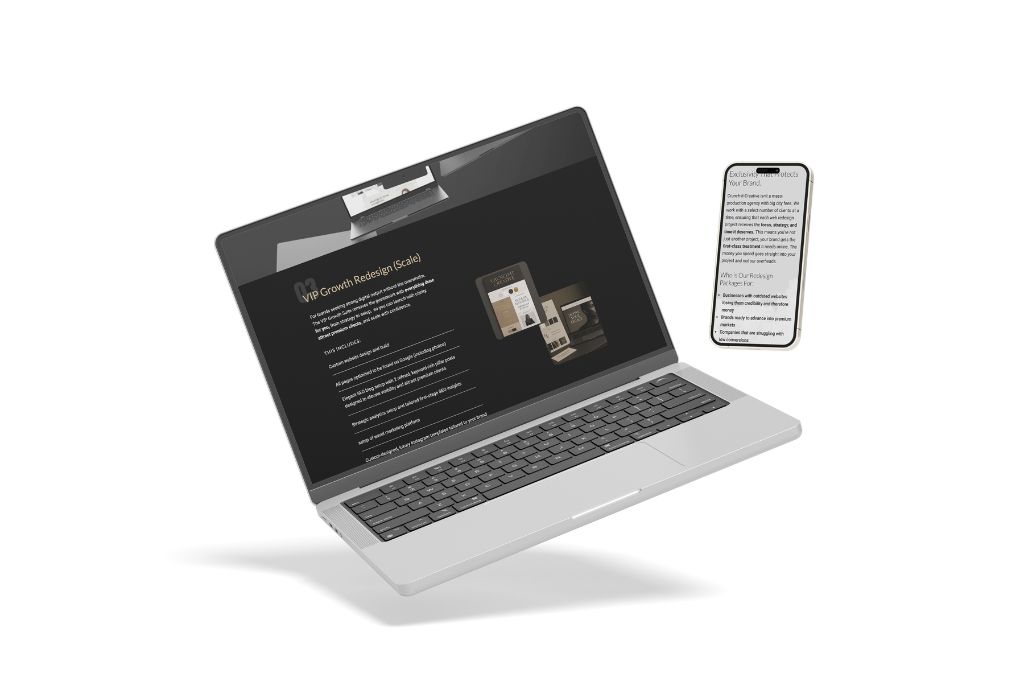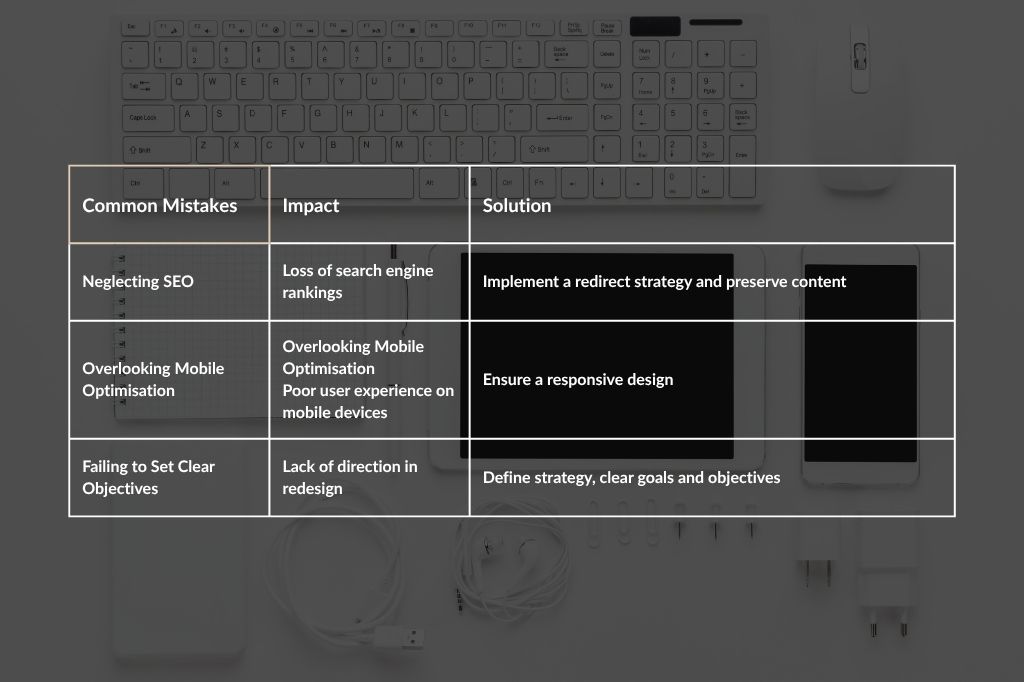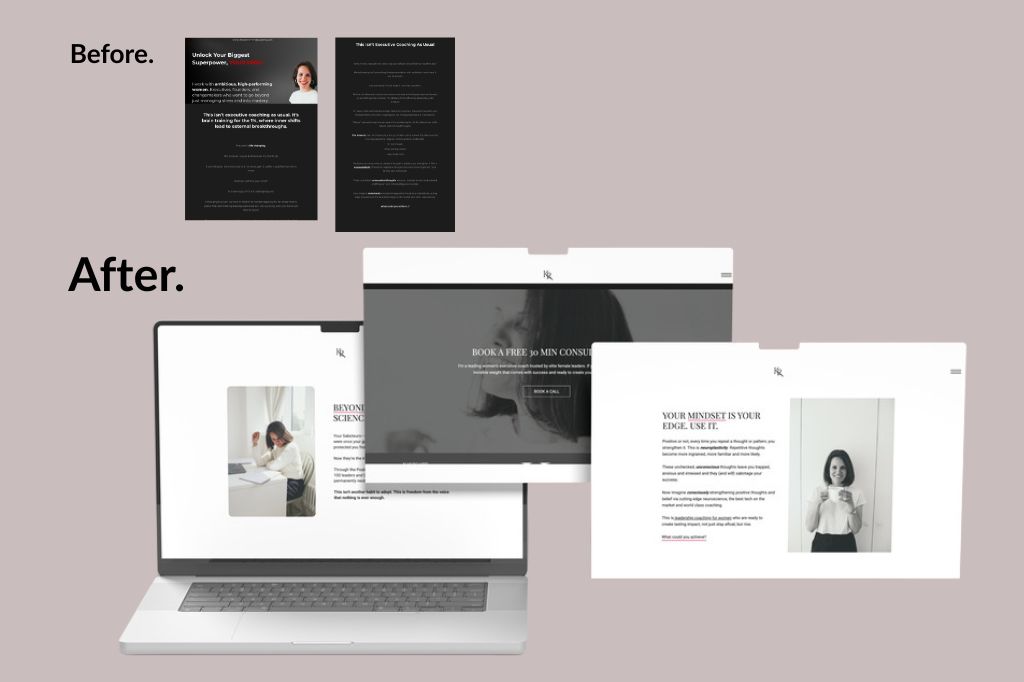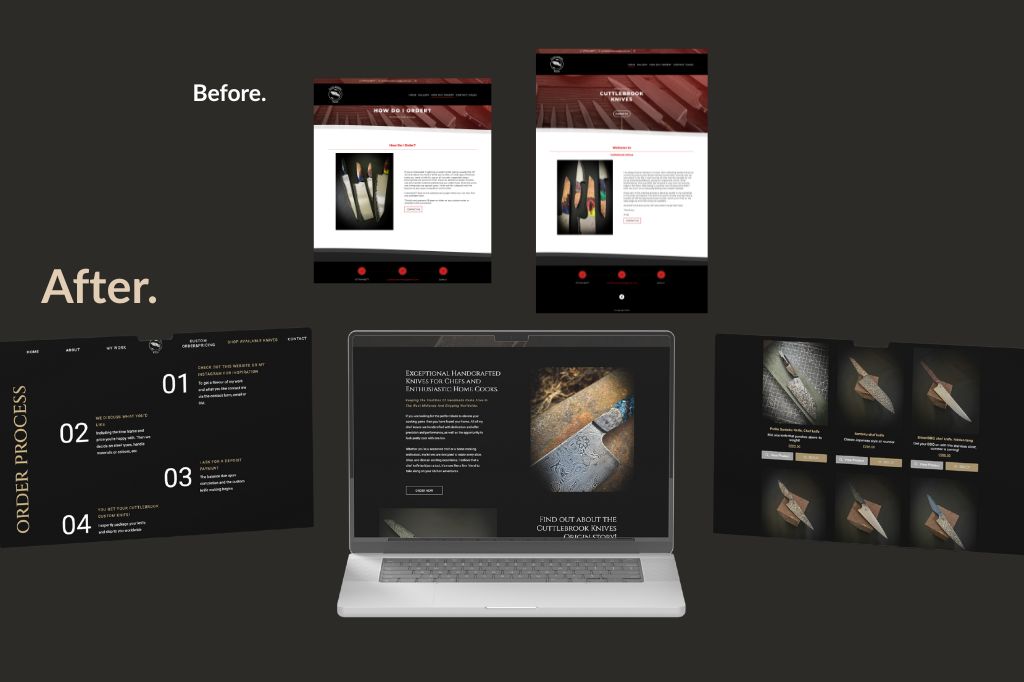Your Complete Guide To Website Redesign
Let me be honest, a good website redesign is more than just a new look. It’s naive to think that just changing the colours on your website, or choosing the latest best-looking template, is going to make a difference to its performance and lead to more visitors and business success.
As a specialist in website redesign and digital marketing, I know the online world is super competitive, and your new website should be about improving structure, content, design, user experience, and technology to meet your business goals and not just your visual preference.

That’s why I wrote this guide. It will dive into the world of website redesign, looking at its importance, the steps involved, and what makes one successful. By the end, you’ll know how to boost your online presence with a professional website redesign service.
Key Takeaways
- Understand the importance of a website redesign for your business.
- Learn the key elements that make a website redesign successful.
- The difference between a website refresh and a redesign.
- Explore the different packages available for website redesign services.
- Gain insights into the costs associated with a website redesign.
So let’s get into it and learn the nuances of your website overhaul.
What Is Website Redesign and Why Does It Matter?
A website redesign isn’t simply a makeover; it’s a strategic rebuild of how your brand shows up online. It redefines how your business communicates, converts, and competes.
Rather than just swapping colours and layouts, a redesign evaluates performance, structure, and message alignment. It’s about refining what already exists: your content, brand story, and customer journey, so your website becomes a sharper, more effective tool for growth and not just an electronic leaflet.
In essence, it is a recalibration: keeping what works, fixing what doesn’t, and aligning every element with where your business is heading next.
Website Refresh vs Redesign
Website refreshes and redesigns address different strategic needs.
A refresh polishes what already works. It updates visual language and small usability details to keep the brand current. For example, a more on-brand colour palette, stronger imagery, and clearer copy. The result is a site that feels more aligned without changing its core structure.
A redesign not only adds the professional aesthetics mentioned above, but also evaluates the foundation. It restructures information architecture, upgrades key functions, and improves journeys from visit to enquiry. This approach links every page to measurable goals and the tasks users need to complete.
Signs Your Website Needs a Redesign
To find this article, you must have that gut feeling of a need there. But in addition, if your website shows any of the signs below, it’s probably time to consider a redesign.

The Outcome
A well-executed redesign keeps what works and strengthens what doesn’t. It aligns structure, content, and visual identity with where your business is heading.
The result is a site that feels confident, resonates with your customers, and enhances loyalty.
The Website Redesign Process Explained
To redesign a website well, you need to know the steps from start to finish. The process is complex, needing careful planning and smart decisions. Knowing each stage helps you work better with your redesign company. Read on to hear my process at Crunch-it-Creative.
Discovery and Analysis Phase
The first step is the discovery and analysis phase. Here, I gather data on your current website. This includes its good points, weak spots, and how it performs. I will also learn about your audience’s needs and likes.
This research helps your redesign company understand your business and online presence deeply.
Planning and Strategy Development
After discovery comes planning and strategy. This stage makes a detailed plan for your redesign. It sets the project’s scope, goals, and technical needs.
Important parts of this phase are:
- Defining the website’s goals and objectives
- Identifying the target audience and user personas
- Developing a content strategy
- Outlining the technical specifications and infrastructure needs
I also offer a brand strategy service. This is the compass that guides every design and message. It defines why the business exists, who it serves, how it stands out, and what idea it wants to be known for.
The outcome is a clear direction across four key areas: a focused vision and mission, a defined customer persona as above, a strong market position, and a distinctive big idea that shapes all creative decisions.
Implementation and Launch
The last stage is the website’s launch. Here, I rebuild your website based on the plans. Ensuring it looks great and works as it should.
There are also checks to find out that it is easy to use and good for search engines. After testing, the site is ready to go live.
If you want to delve deeper into the analytics, I utilise a highly experienced research psychologist to produce data and actionable insights.

Average Website Redesign Cost
The average website redesign cost can vary a lot. It depends on the business size and project scope. It’s key for businesses to know these costs to plan and budget well for their website redesigns.
Small Business Website Redesign Costs
Small businesses usually spend between £2,000 to £6,000 on website redesigns. This price covers basic design, development, and content creation. Design complexity and page count are important factors.
Medium Business Website Redesign Costs
Medium-sized businesses pay between £6,000 and £20,000 for redesigns. The cost goes up because of more complex needs like e-commerce and custom features. E-commerce and custom content management systems add to the expense.
Enterprise-Level Website Redesign Costs
For big businesses, costs can go over £50,000. These projects need complex architectures, handle lots of traffic, and have top security. Scalability and security are critical for large enterprises.
If you want to delve a bit deeper into website redesign costs, I wrote a blog explaining more. Read more here.
Understanding Website Redesign Packages
Website redesign companies offer various packages for different needs and budgets. It’s key to pick the right one for your business goals.
When choosing a website redesign package, look at what each offers. There are basic, standard, and premium options. Each is designed for specific business needs.

Basic Redesign Packages
Basic packages are great for small businesses or those on a tight budget. They include a simple design update, basic content changes, and some technical tweaks. Key features are a template design, limited customisation, and standard functions.
Standard Redesign Packages
Standard packages are for businesses wanting to boost their online presence. They offer a custom-designed site, advanced content, and better SEO. Notable features are responsive design, better user experience, and social media integration.
Premium Redesign Packages
Premium packages are for big businesses or those needing a top-notch online presence. They include unique design, detailed content, and advanced tech. Premium features are e-commerce, custom apps, and ongoing support.
Knowing the differences helps you pick the right package for your business. This ensures a successful website redesign.
I offer the full range of website redesign packages to fit your business and budget. Click the link for more information.
Common Website Redesign Mistakes to Avoid
When you’re redesigning a website, it’s key to steer clear of common errors. These mistakes can harm your online image. A well-thought-out redesign can make your site better for users, increase sales, and improve your brand’s look. But some errors can make your site worse and hurt your search rankings.

Neglecting SEO During Redesign
One big mistake is ignoring SEO during a redesign. This can lead to losing search rankings and visitors. To avoid this, make sure to:
Redirect Strategy
A good redirect strategy is vital to keep your search rankings. Set up 301 redirects for old URLs to new ones. This helps both users and search engines smoothly move to the new site.
Content Preservation
Content preservation is also key. Make sure your old content is moved correctly to the new site. Try not to change URLs or content structure too much.
Overlooking Mobile Optimisation
Most people use mobile devices to access websites. So, mobile optimisation is a must. Make sure your redesign works well on all devices and screen sizes.
Failing to Set Clear Objectives
Before you start redesigning, set clear objectives. What do you want to achieve with your new site? Do you want to improve user interaction, boost sales, or enhance your brand? Having clear goals will help guide your redesign.

Avoiding these common mistakes can lead to a successful redesign. This will improve your online presence and help your business grow.
Website Redesign Examples
Let’s look at some website redesigns that boosted business success and user experience. Many website redesign examples show how businesses have made their online spaces better. They now engage their audience more and see their profits grow.
Service Business Website Makeovers
Kaya Ramjee is an internationally renowned mindset and executive coach. Her new website redesign brings her coaching brand to life with clarity and confidence. As a coaching website designer, the project focused on creating a seamless user experience that reflects her expertise and helps clients connect instantly.

Small Business Website Redesign
Cuttlebrook Knives works with Michelin-starred chefs and avid home cooks alike. His website was completely redesigned to showcase his craftsmanship and precision. This small business website highlights Andy’s handmade knives through bold visuals, clear navigation, and a refined shopping experience that reflects the quality of their work.

Conclusion: Taking the Next Step in Your Website Redesign Journey
This guide to redesigning your website shows that success comes from careful planning and ongoing checks. Knowing when to redesign and focusing on user experience and performance are key. These steps help grow your business and enhance your online image.
As you move forward, keep your goals in mind and always look to improve your site. A good redesign can greatly benefit any business, big or small. This guide will help you create a site that showcases your brand and boosts success.
Now, you know more, start by spotting areas for improvement and checking how your site performs. Make smart choices for your redesign project. With a clear plan and focus, you’re ready to achieve a website that meets your needs and brings results.
If you want to hand over the whole project to specialists who take care of everything for you, then contact me for a free consultation. Or if you want to read more about my website redesign service, then click here.
PS. If you have any more questions, they may be answered in the FAQ below. Not listed? Get in touch!
FAQ’s
What does a website redesign cost?
The cost of a website redesign in the UK changes based on the project’s size and complexity. Prices range from £2,000 for a simple redesign to over £50,000 for more complex projects.
How long does a website redesign take?
The time needed for a website redesign varies. It can take from a few weeks to several months. The exact time depends on the project’s scope, design complexity, and technology used.
What are the key elements of a successful website redesign?
Key elements for a successful redesign include improving user experience, creating a solid content strategy, ensuring technical performance, brand alignment and focusing on SEO. These elements help make a website user-friendly and effective for business.
How do I choose the right website redesign company?
To pick the right company, look at their portfolio and case studies. Understand their process and read client testimonials. This research helps find a company that meets your needs and delivers quality work.
We specialise in website redesigns. If you are interested, book a free discovery session and see how we can help.
What are the common mistakes to avoid during a website redesign?
Avoid mistakes like ignoring SEO, not focusing on mobile optimisation, and not setting clear goals. Knowing these common errors helps ensure a successful redesign.
How do I measure the success of my website redesign?
Success can be measured by tracking KPIs, user feedback, and improvements in conversion rates. These metrics help refine and enhance your website over time.
What is included in a typical website redesign package?
A typical package includes discovery, planning, design, development, content creation, testing, and launch. The exact services depend on the provider and the chosen package.
When should I consider redesigning my website?
Consider a redesign if your website’s performance is dropping, the design is outdated, or you face technical issues. A redesign can boost user experience, drive business success, and keep your online presence current.
Drop me a comment